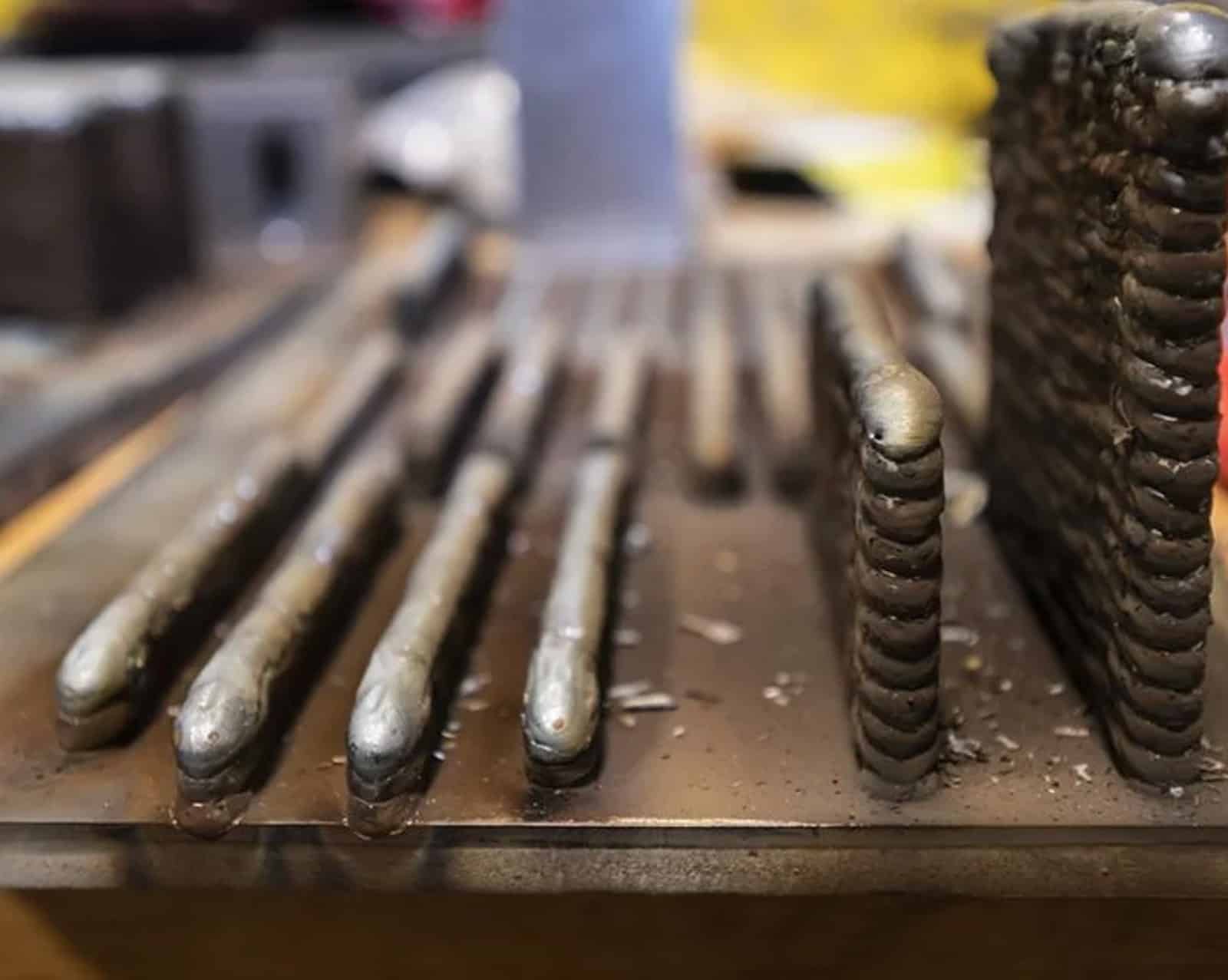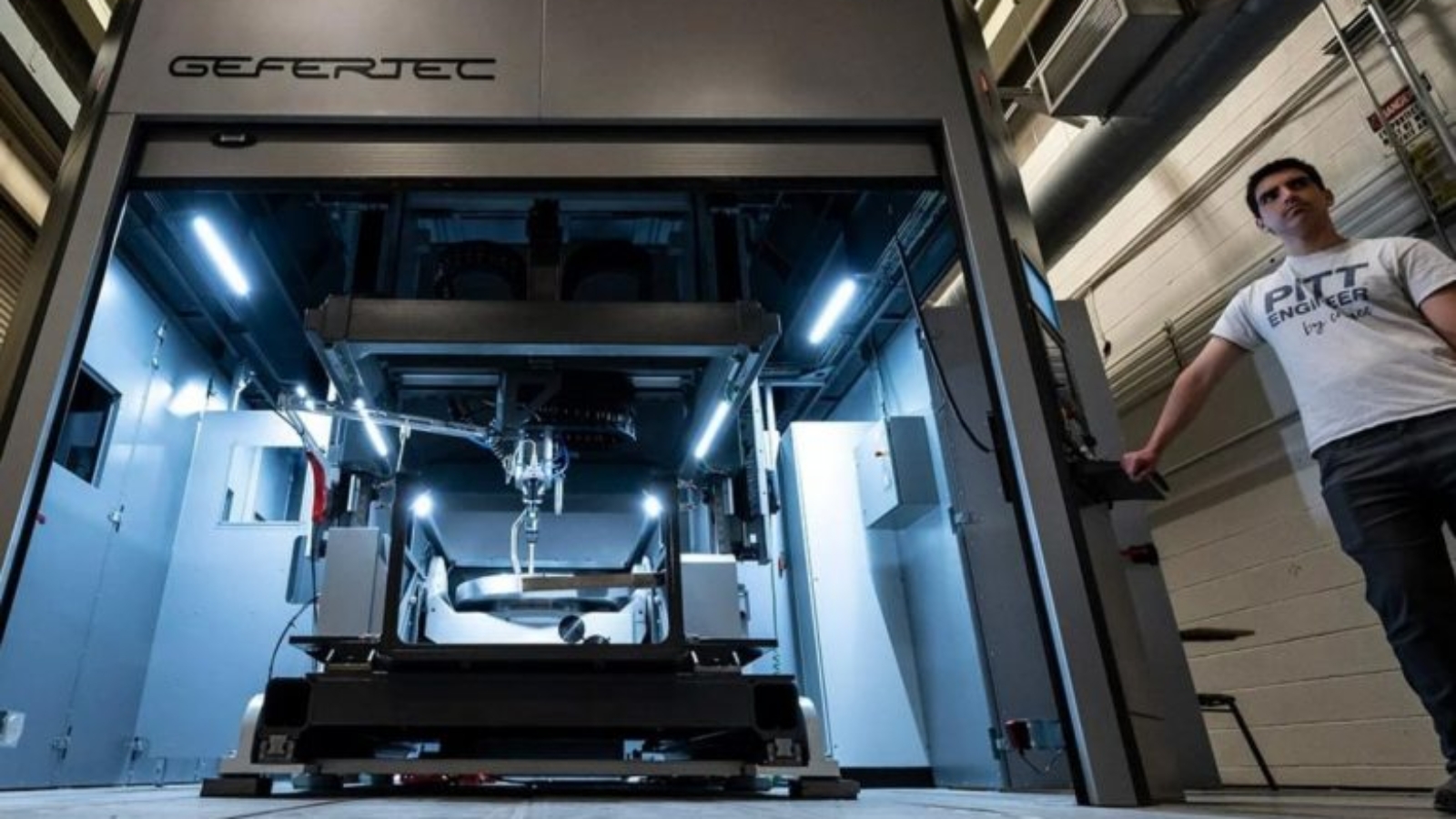Last month, the university of Pittsburgh became the first university in the US to have a Gefertec arc605 on campus. The arc605 is a state-of-the-art, 5-axis metal 3D printer, developed by Gefertec, a 3D printer manufacturer based in Germany.
According to Albert To, William Kepler Whiteford Professor in the Swanson School of Engineering, and an expert on 3D printing, when it comes to producing large, specialized metal parts – the arc605 is unbeatable. “Even on the order of tens of parts, this is very advantageous,” said Albert To. “And if you want to include some complexity, then you can’t do it any other way than 3D printing.”

The arc605 printer works using Wire Arc Additive Manufacturing (WAAM), a 3D printing process belonging to the Direct Energy Deposition (DED) category of AM processes. This process is notably faster than the previous metal Laser Powder Bed Fusion (LBPF) 3D printers used in the lab – making the Gefertec printer well-suited for producing larger parts that would traditionally have to be cast and tooled – a longer, more limited, and more expensive technique when manufacturing small-batches. The printer’s WAAM technology is therefore better-suited for one of Albert To’s first projects – making a three-foot-long bridge joint for the US Army that is no longer manufactured.
However, this technology is not without flaws. For example – metals warp as they heat and cool. Albert To is using funding from the US Army, and the Department of Energy, to study this process.
Manufacturing on Demand
Xavier Jimenez, a third-year Ph.D. student in Albert To’s lab, is developing a process to 3D print with a type of high-strength aluminum that has potential applications in aerospace. However, the aluminum tends to crack when welded. “You have to tune all these different parameters to figure out what will produce the best-quality weld,” said Xavier Jimenez. “Every material behaves a little differently.” The Gefertec arc605 printer was part of the reason he chose the University of Pittsburgh.

Considering that the machine is larger than some studio apartments – it had to be dropped into the lab piece-by-piece, via crane, and then assembled once the pieces were inside. “It was a lot of work to get all the pieces together to get the machine working,” said Xavier Jimenez. “We’re very happy that it’s here.”
With the machine installed, the team is now testing parameters for the 3D printing of different metals. By testing the approach for different metals, then using X-rays and testing the material properties, they can start to model how the process affects a part – from visible warping to changes to the microscopic structure of the material.
Albert To is also collaborating with colleagues to create smart components where fiber-optic cables are embedded in 3D printed metal parts to sense the temperature and deformation of the part.
You might also like:
Optomec and Acme Manufacturing showcase industry-first work cell: The automated work cell has a repair capacity of 85,000 titanium compressor blades per year and provides a compelling ROI when compared to traditional CNC machines and manual TIG welding. Technologies used in the automated work cell are currently commercially available and have been certified by civil aviation authorities around the world.
* This article is reprinted from 3D Printing Media Network. If you are involved in infringement, please contact us to delete it.
Author: Edward Wakefield


Leave A Comment